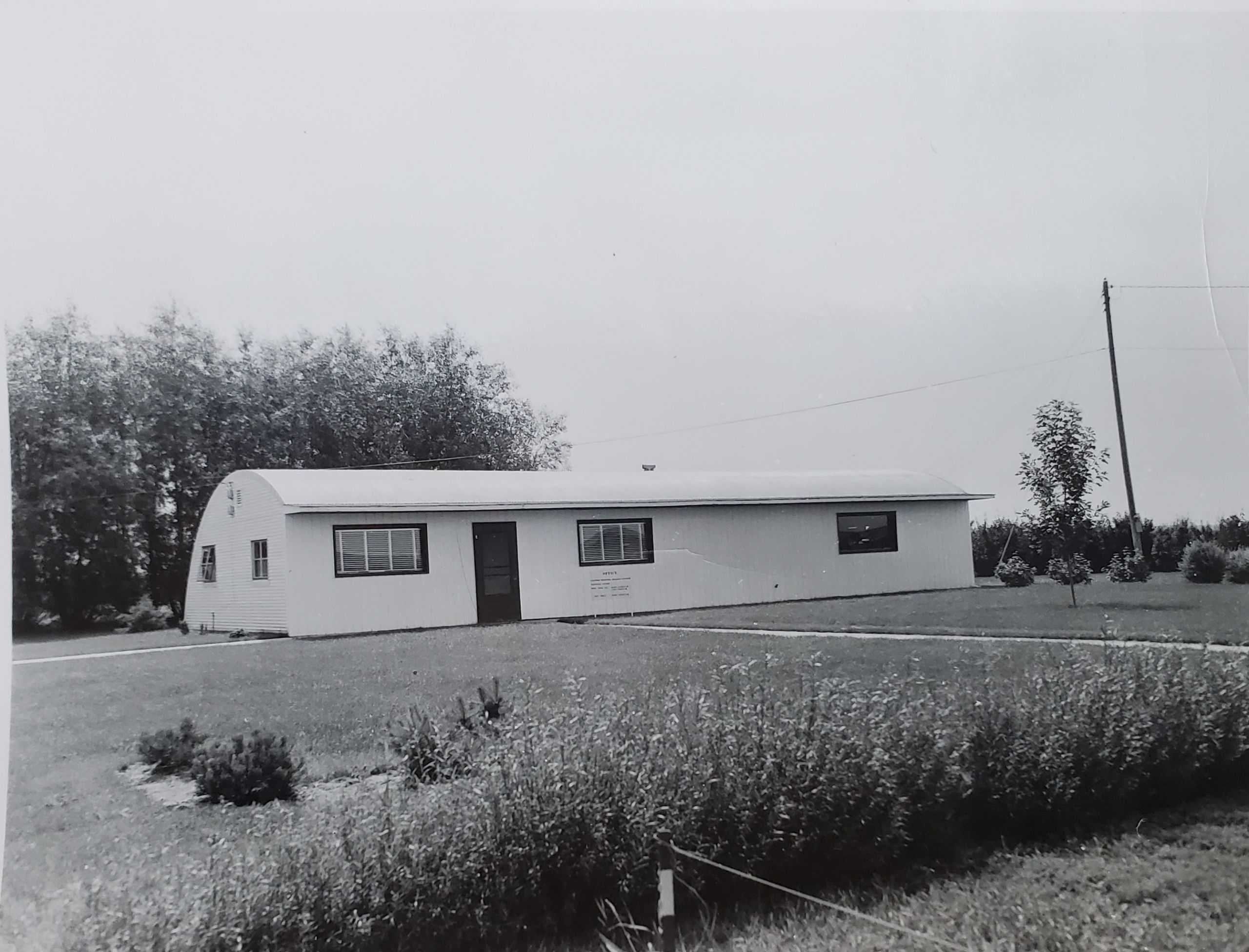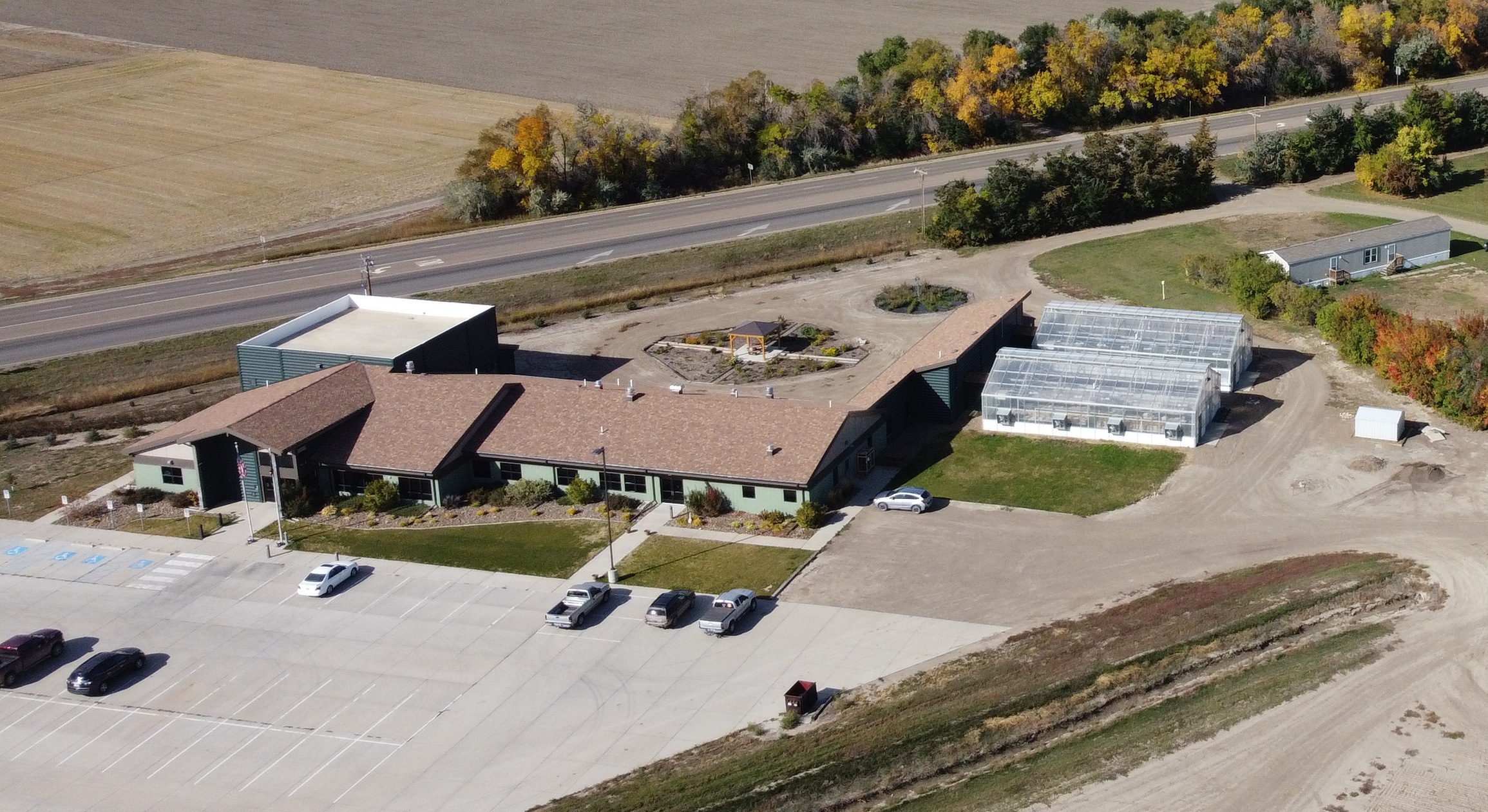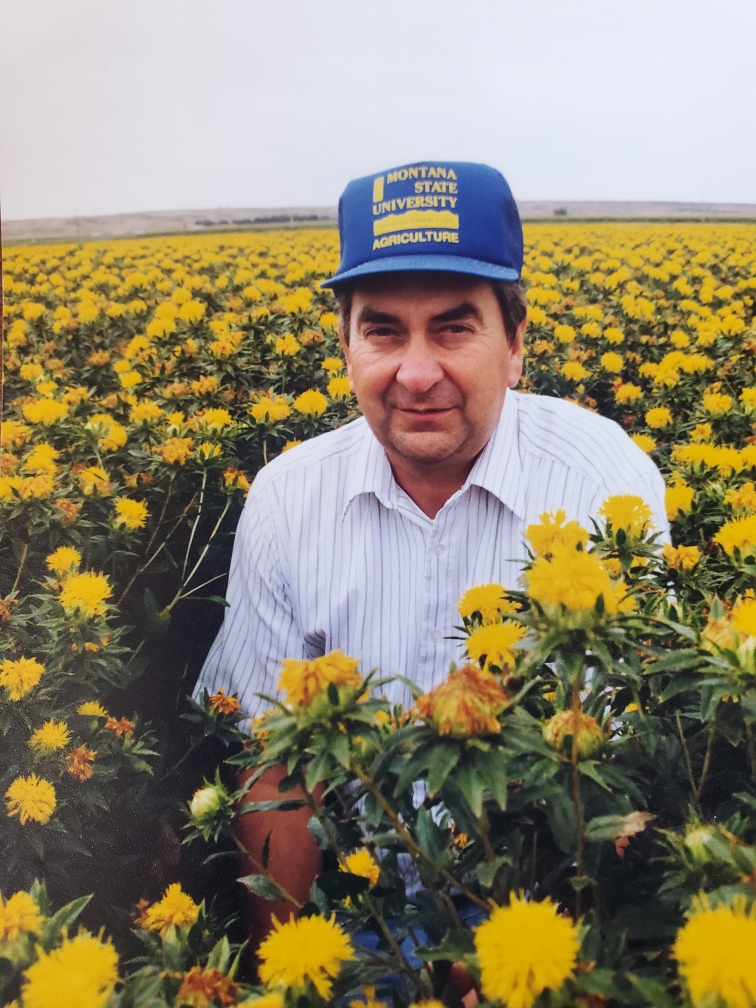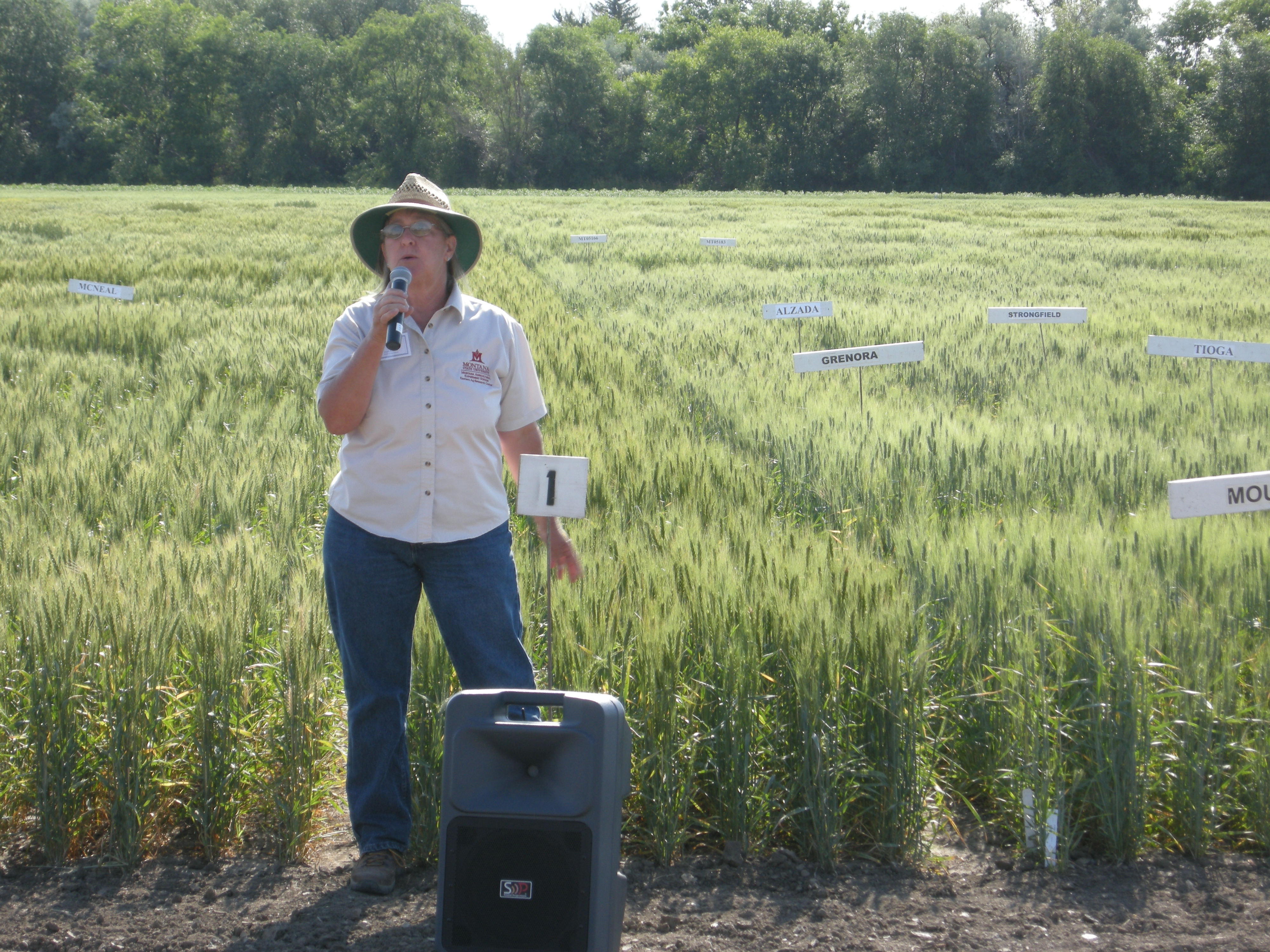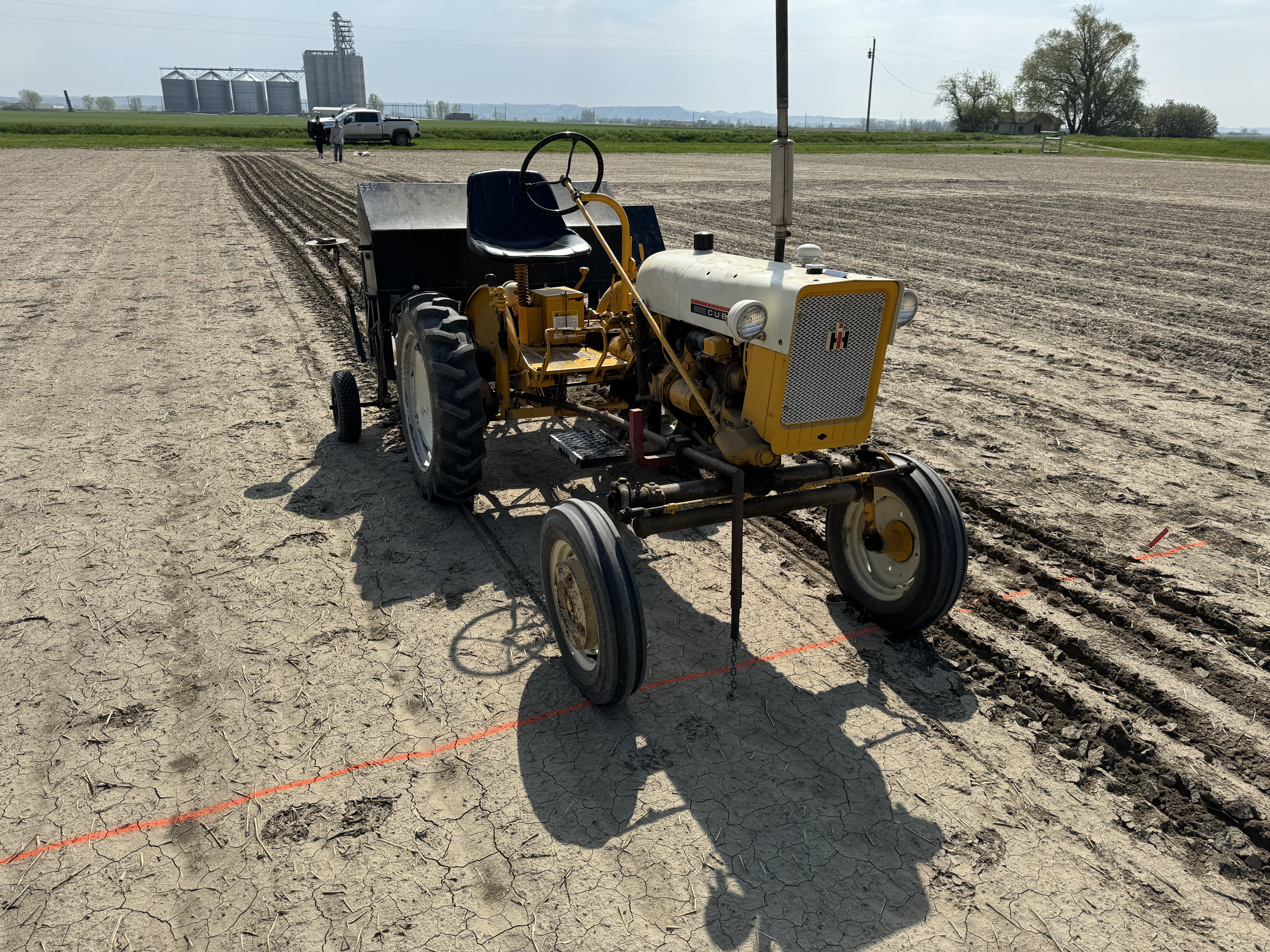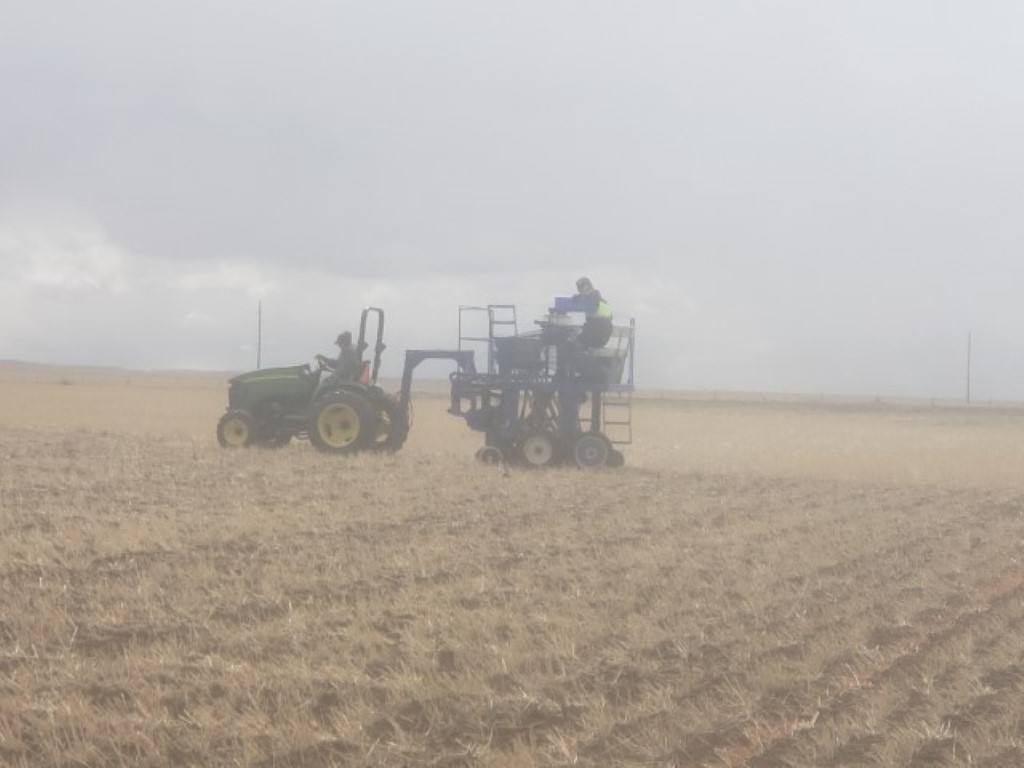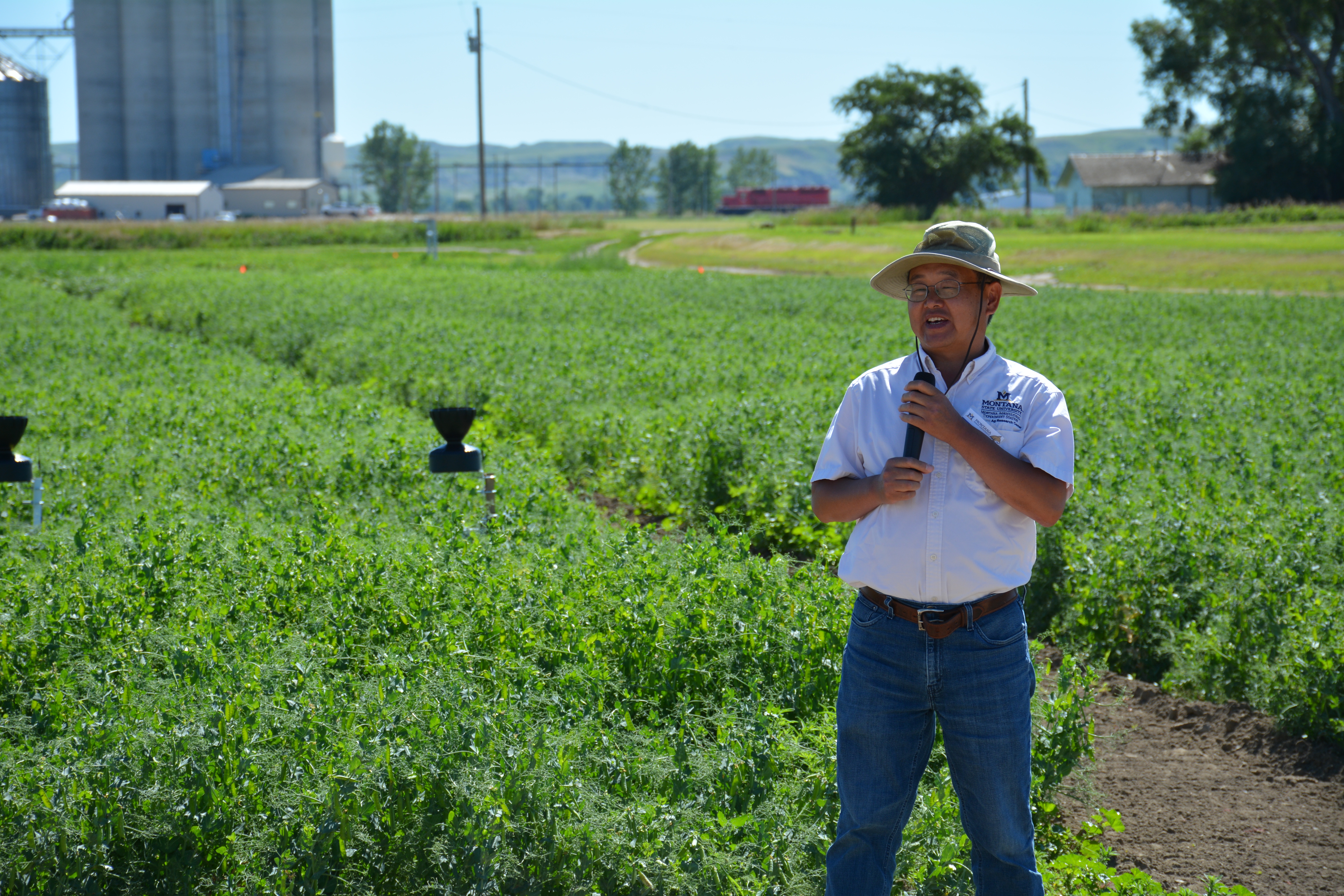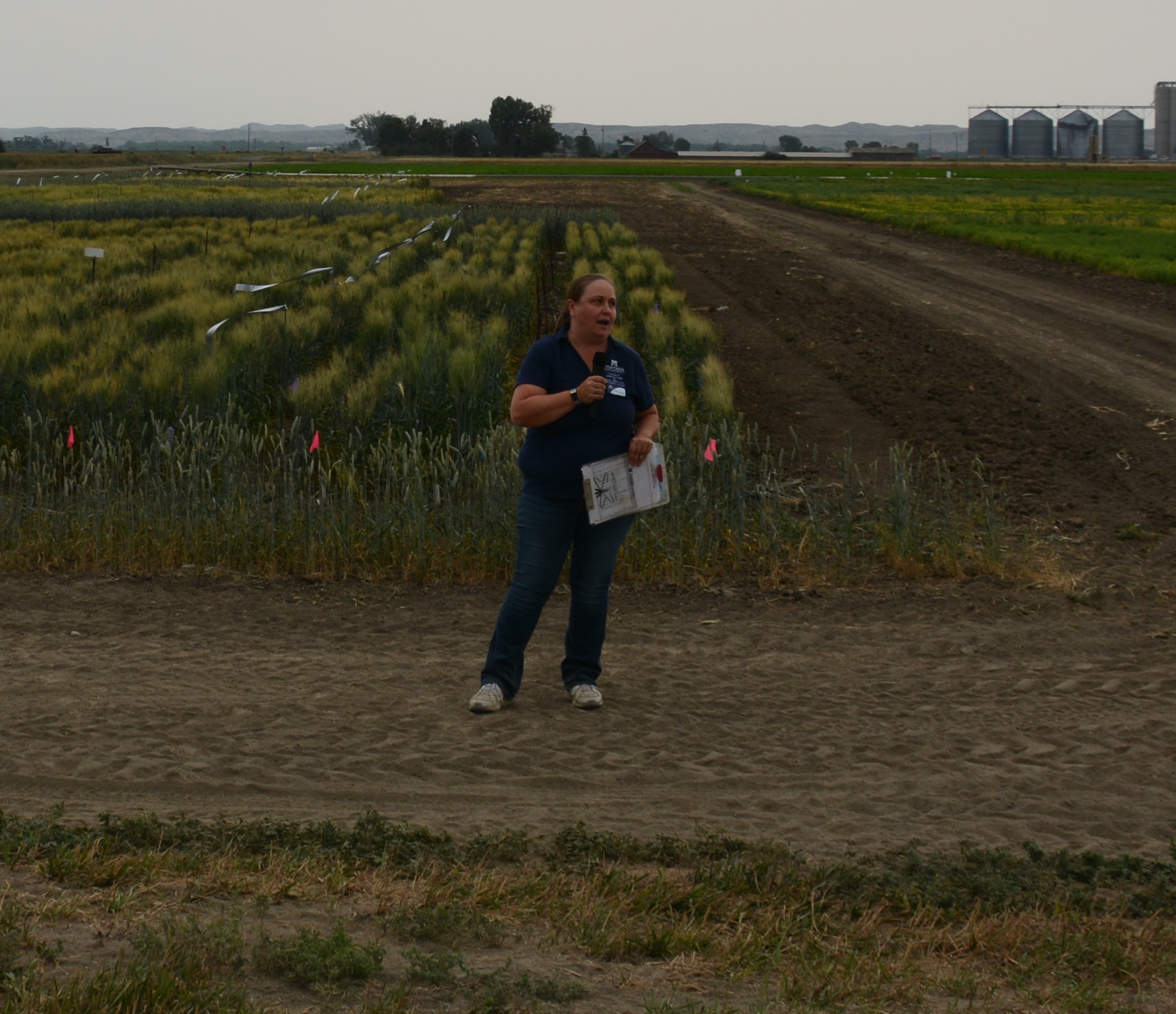History of the EARC
In 1947, House Bill 386 was passed, allowing the formation of an Eastern Agricultural Research Center in Sidney, MT.
William B. Nelson arrived in 1948 at the state farm site outside of Sidney, MT, to begin his role as the EARC superintendent and agronomist. He found no office space, vehicles, machinery or equipment for this new task. Two Quonset buildings were erected in the first few years to serve as an office and chemical shed, as well as a farm foreman house that was later replaced in 1970 by a house from Miles City’s deactivated Military Radar Base.
In 1959, Glen Hartman arrived as the new superintendent. In his earlier years, Glen, his wife (Olive), and their three sons all helped to design, plant, maintain and harvest research plots. The first focus of research was weed control, but under Glen’s leadership, safflower herbicides were screened; protocols for sugar beet nitrogen budget systems were created; variety trials were designed; and soil fertility studies were conducted.
Dr. Jerry Bergman joined the station in 1974 as a safflower breeder, immediately taking on the challenge to develop an Alternaria resistant safflower variety within four years to help save the crop’s future in the region. Reaching his goal, Bergman identified disease resistant genes and began breeding them into new safflower varieties.
Jerry took over as EARC’s superintendent in 1980. Research for the center revolved around variety trials for his passion, safflower, as well as small grains, oilseeds, sugarbeets and forage crops. With Jerry’s push, a new linear sprinkler irrigation system was installed, increasing research opportunities.
In 2010, ground was broken for a new $1.6 mil facility. The old office building was beyond repair and all lab work and administrations were being conducted in ‘borrowed’ space at the USDA-ARS. Local businesses and individuals contributed $753,000 to the project which was completed in 2011. Combining EARC and the Richland County Extension, the building included offices, a large and small conference room, two labs, a headhouse and two greenhouses.
At the end of 2011, Bergman retired from MSU to take a full-time position at the WREC as director. The station was left in the capable hands of Dr. Joyce Eckhoff, a durum breeder who had worked at the EARC as an agronomist for 26 years at that point.
In 2015, Dr. Chengci Chen took over as superintendent of the station. The EARC now coordinates statewide pulse trials, along with numerous variety trials both on the station’s irrigated and dryland farms as well as on cooperating producers’ fields at four different counties. Dr. Frankie Crutcher joined the faculty in 2016, developing a Plant Pathology Program over the years to help identify and control agricultural diseases affecting local producers.
With the closing of Sidney Sugars in 2022, research at the station has shifted in the past few years to finding alternative crops for farmers in the Yellowstone Valley. In the year 2024, the EARC planted 2,200 small grain plots; 2,500 pulse plots; 1,369 oilseed plots; and 2,624 Pathology plots, continuing to serve the MonDak region.
|
Old office buiding shortly after construction |
New office building with up-to-date labs, offices, meeting rooms and greenhouses |
|
|
Dr. Jerry Bergman in safflower |
Dr. Joyce Eckhoff speaking at field day |
|
|
Old single row plot seeder |
Planting pulse crops in a spring snow flurry with the new 6-row planter |
|
|
Dr. Chengci Chen, current supervisor at the EARC |
Dr. Frankie Crutcher, plant pathologist at the EARC |

